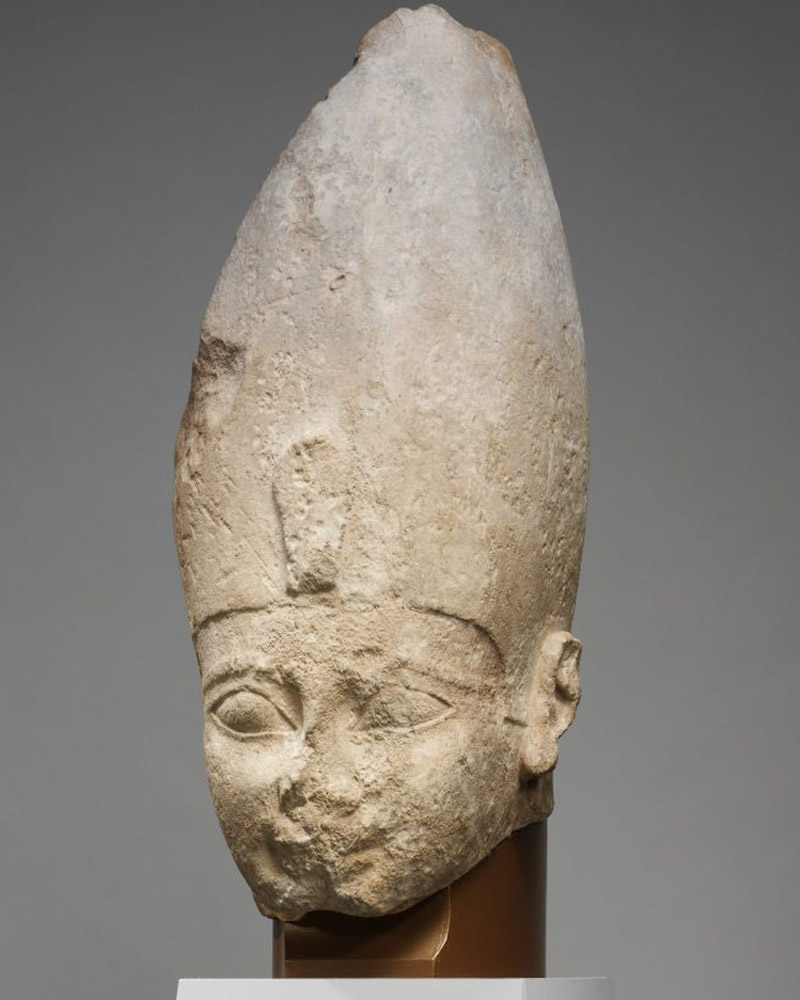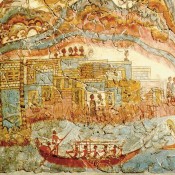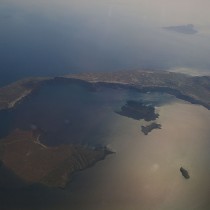A new interpretation of a well known Egyptian text produced 3,500 years ago seems to convey that the Egyptians may have been well aware of the Thera eruption, having actually experienced it themselves.
Carved in a 6 foot tall calcite stone during the reign of Pharaoh Ahmose I, at the beginning of the New Kingdom (c. 1550 BC), and developed in 40 lines, the Tempest Stela inscription has been found in pieces within the sacred enclosure of Karnak, near Luxor, Egypt. Restored during 1967-1968, it was proved to contain a description of events culminating with a mass destruction of monuments during to a vast physical catastrophy allegedly having taken place during the last years of the Hyksos rule. In detail, the catastrophy is in the form of a tempest which seems to have caused floods and is described as “causing darkness in the Western region”. And while most Egyptologists perceived the description as a metaphor used in the framework of post-Hyksos royal propaganda, University of Chicago Oriental Institute’ s scholars Nadine Moeller and Robert Ritner associate it with a real event: the Thera eruption, which might have been taken place in the Aegean, NW of Egypt a bit earlier than Ahmose I (datings include 1627-1600 BC and 1570 BC). What is new though, is that the two scholars propose Ahmose I was actually contemporary to the eruption, presenting evidence that move his reign earlier than the commonly accepted date.
The two scholars recently produced a new translation of the stela alongside a commentary, where the tempest is indicated as a real ( not metaphorical) natural phenomenon with a longstanding impact to Egypt as a whole ( and not regionally). A revised chronology according to new analyses is also presented, with the proposal to put Ahmose’s reign “at a date that is about ten to fifteen years older than previously assumed”.
“This is important to scholars of the ancient Near East and eastern Mediterranean, generally because the chronology that archaeologists use is based on the lists of Egyptian pharaohs, and this new information could adjust those dates,” said Moeller, assistant professor of Egyptian Archaeology at the Oriental Institute and an expert in ancient chronology.
The revised dating of Ahmose’s reign could mean the dates of other events in the ancient Near East fit together more logically, scholars said. For example, it realigns the dates of important events such as the fall of the power of the Canaanites and the collapse of the Babylonian Empire, said David Schloen, associate professor in the Oriental Institute and Near Eastern Languages & Civilizations on ancient cultures in the Middle East.
“This new information would provide a better understanding of the role of the environment in the development and destruction of empires in the ancient Middle East,” he said.
For example, the new chronology helps to explain how Ahmose rose to power and supplanted the Canaanite rulers of Egypt—the Hyksos—according to Schloen. The Thera eruption and resulting tsunami would have destroyed the Hyksos’ ports and significantly weakened their sea power.
In addition, the disruption to trade and agriculture caused by the eruption would have undermined the power of the Babylonian Empire and could explain why the Babylonians were unable to fend off an invasion of the Hittites, another ancient culture that flourished in what is now Turkey.




